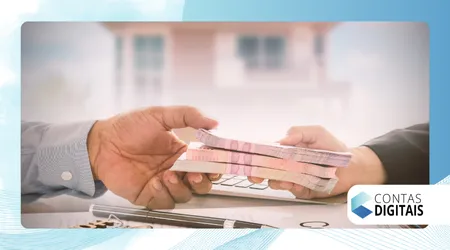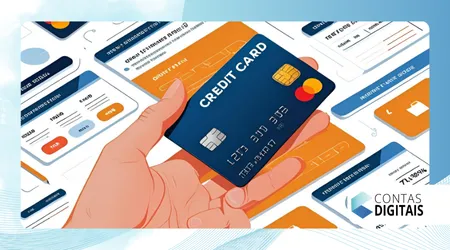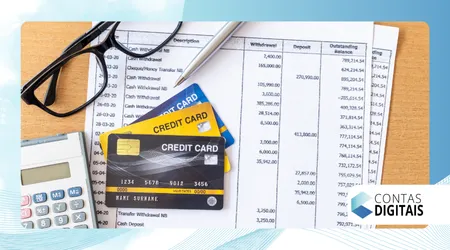Loan or installment credit card? Which is easier on your wallet?
When the budget is tight, the question arises: loan or credit card in installments?
Both options promise to be easier on your wallet, but which one really delivers the best value for money?
Choosing between the two requires analysis, because although they appear to be similar paths, the financial impacts vary depending on the context.
In this text, we will explore the nuances of each alternative, with solid arguments, practical examples, a revealing statistic, and an analogy to clarify the decision.
Plus, we'll answer common questions to guide you safely.
After all, what weight are you willing to carry in your financial planning?
Understanding the characteristics of each option
First, it is essential to understand how they work personal loans and the installment credit card.
A personal loan offers a fixed amount, released all at once, which you pay back in monthly installments with previously agreed interest.
See also: How to Scale a Freelance Business to a Micro-Enterprise
Banks, financial institutions, and fintechs offer this option, with rates that vary depending on the customer's profile and payment terms.
On the other hand, the installment credit card allows you to divide specific purchases into installments, with or without interest, depending on the offer of the establishment or the card operator.
While a loan provides greater control over where the money is spent, an installment card is tied to a specific purchase.
For example, imagine that Ana needs R$ 5,000 to renovate her house.
With a loan, she receives the full amount and uses it as she wishes, paying fixed installments.
With the installment card, she could only use the available limit for specific purchases, such as furniture or construction materials, and the interest rates could vary depending on the store.
This structural difference directly impacts flexibility and final cost.
Furthermore, terms and interest rates differ significantly.
Personal loans generally have longer terms, from 12 to 60 months, with average rates of 2% to 6% per month, according to data from the Central Bank of Brazil.
Installment credit cards usually offer shorter terms, from 3 to 24 months, but with interest that can exceed 10% per month in case of delay or installment with charges.
Therefore, understanding these characteristics is the first step in deciding which option is more affordable.
Comparing costs: the impact on the budget
Now, let's get to the heart of the matter: which alternative costs less?
To do this, it is crucial to analyze interest rates and the Total Effective Cost (TEC), which includes not only interest, but also charges such as IOF (Tax on Financial Transactions) and administrative fees.
++ How to discover niche markets with high demand
Personal loans, especially payroll loans, tend to offer lower rates, especially for those with a good credit history.
For example, in 2024, the average interest rate for personal loans was 2.5% per month, according to the Central Bank, while the interest-free installment credit card may be attractive, but any delay in payment triggers revolving interest of up to 15% per month.
Consider the case of John, who bought a cell phone for R$ 3,000.
He chose to pay in 12 interest-free installments on his card, paying R$1,400 per month.
Everything seemed perfect, until, in the third month, he was late paying the bill.
The outstanding balance entered the revolving credit, and the accumulated interest turned the debt into R$1,200 in just a few months.
If João had opted for a personal loan with a rate of 2% per month, the total cost would be around R$ 3,600, with fixed and predictable installments.
This example illustrates how credit cards, while convenient, can be a trap if there is no discipline.
On the other hand, borrowing requires planning.
Fixed installments can weigh on your monthly budget, especially if the term is short.
Furthermore, the CET varies between institutions, and it is essential to compare proposals.
++ How to consult cases on the Federal Court website
A useful analogy is to imagine that borrowing is like a straight road: you know exactly where it's going and how long it will take.
The installment card is like a trail with tempting shortcuts, but full of hidden holes.
Which path would you choose to reach your financial destination without surprises?
Flexibility and risks: what to consider?

Another crucial point is the flexibility of each option.
Personal loans offer greater freedom to use the money, but require a commitment to fixed payments, regardless of Hawkins' financial situation.
The installment credit card is tied to specific purchases, which may limit its usefulness, but allows adjustments to the limit available for new purchases, as long as the bill is up to date.
This difference is critical for those who need funds for multiple purposes versus those looking to finance a one-off purchase.
The risks also vary.
With credit cards, the biggest danger is losing control. A 2023 survey by the National Confederation of Commerce (CNC) revealed that 781,000 Brazilians in debt have credit card debt, often due to a lack of planning when paying bills.
Loans, although more predictable, can lead to default if the borrower underestimates the impact of the installments on their budget.
For example, Maria took out a loan of R$ 10,000 to pay off credit card debt.
The fixed installments of R$ 350 fit within the budget, but an unforeseen medical issue caused her to delay payments, generating additional fines and interest.
Therefore, the choice depends on your financial profile.
If you need flexibility for various expenses and have the discipline to keep your bills up to date, an installment card can be advantageous, especially with interest-free promotions.
However, if the need is for a larger amount with predictable costs, a loan may be safer.
The question is: Are you ready to take full control of your financial planning, or do you prefer the convenience that can come with pitfalls?
Strategies to minimize costs
Regardless of your choice, some strategies can help reduce the impact on your wallet.
For loans, always negotiate rates and choose terms that balance affordable installments with a lower total cost.
Comparing the CET between institutions is essential, as differences of 0.5% per month can represent hundreds of reais over the course of the contract.
Also, avoid taking out loans for unnecessary expenses, focusing on priority needs such as education or healthcare.
For installment credit cards, take advantage of interest-free promotions, but stick to a strict schedule to pay your bills on time.
Another tip is to focus purchases on cards with rewards programs, such as miles or cashback, which can provide additional benefits.
Finally, avoid paying for multiple purchases at once, as the accumulation of installments can jeopardize your monthly budget.
For example, consider financial planning as a game of chess.
Each move (loan or installment) requires anticipating the consequences.
Choose between loan or credit card in installments It's like deciding between a knight, which jumps obstacles with agility, or a bishop, which follows a straight and predictable line.
The winning strategy depends on knowing the board, that is, your finances, and planning each move carefully.
Comparison Table: Personal Loan vs. Installment Credit Card
| Criterion | Personal Loan | Installment Credit Card |
|---|---|---|
| Average Interest Rate | 2% to 6% per month (CET varies by institution) | 0% (interest-free) to 15% per month (revolving) |
| Term | 12 to 60 months | 3 to 24 months |
| Flexibility | Free use of the value | Linked to specific purchases |
| Main Risk | Default due to high fixed installments | High interest for late payment |
| Advantage | Cost predictability | Convenience and interest-free promotions |
| Disadvantage | Long-term commitment | Risk of financial mismanagement |
Frequently asked questions: Loan or credit card in installments
| Question | Response |
|---|---|
| Can I use the installment card to pay off a loan? | It is not recommended, as the interest on the card may be higher than the interest on the loan, increasing the total cost. |
| Which option is better for small purchases? | The interest-free installment card is ideal for one-off purchases, as long as you pay on time. |
| How do I find out the APR of a loan? | Request a detailed proposal from the financial institution, which must include the APR (Cetail Interest Rate) with all charges. |
| What if I'm late paying my card? | The outstanding balance goes into the revolving credit facility, with interest that can reach 15% per month, significantly increasing the debt. |
| Are payroll loans cheaper? | Yes, they generally have lower rates, as the installments are deducted directly from salary or benefit. |
Loan or installment credit card: which is less expensive?
Choose between loan or credit card in installments It's not a question of right or wrong, but of alignment with your needs and financial discipline.
The loan offers predictability and flexibility, ideal for those who need a larger amount and have solid planning.
The installment card is convenient for specific purchases, but requires strict control to avoid abusive interest rates.
The CNC statistics for 2023, which indicate that 78% of people in debt have credit card debt, reinforce the importance of using this tool with caution.
Think of your budget like a garden: a loan is a tree that requires constant care but grows predictably; an installment card is a plant that blooms quickly but can wither if neglected.
Before deciding, analyze the APR, compare terms and rates, and assess your payment capacity.
With planning, both options can be allies, but without it, either one can become a burden on your pocket.
What will you choose to cultivate a healthy financial future?

